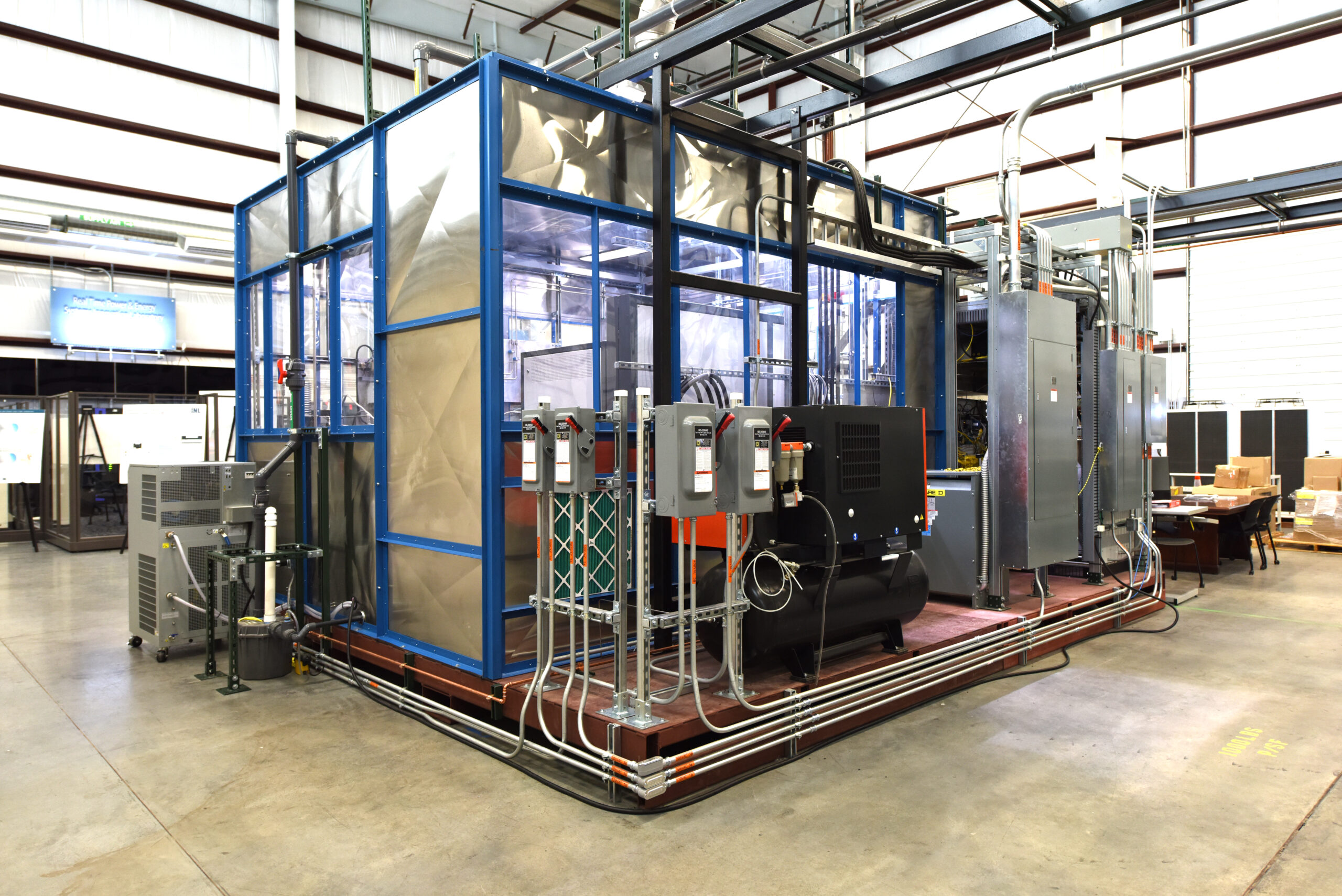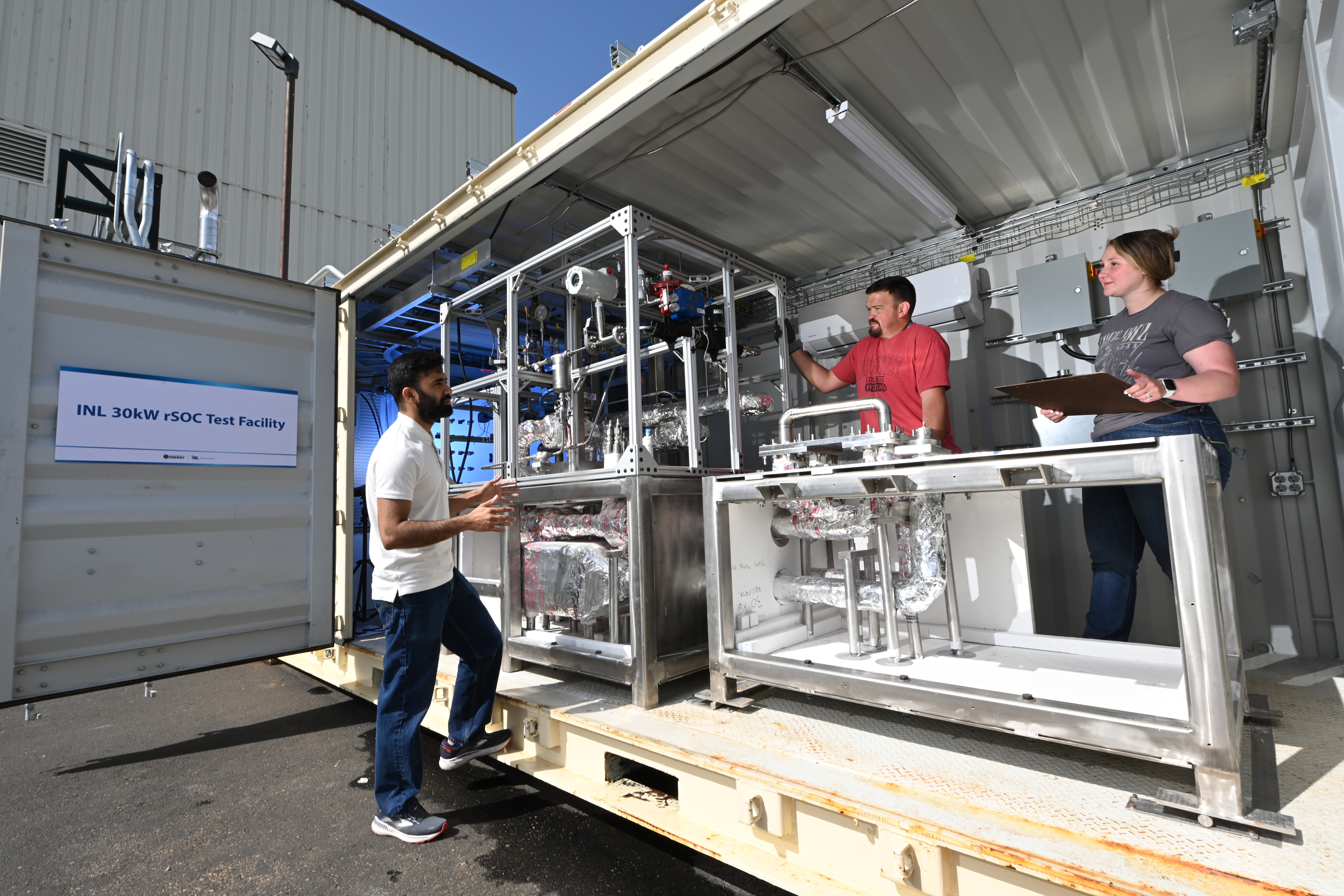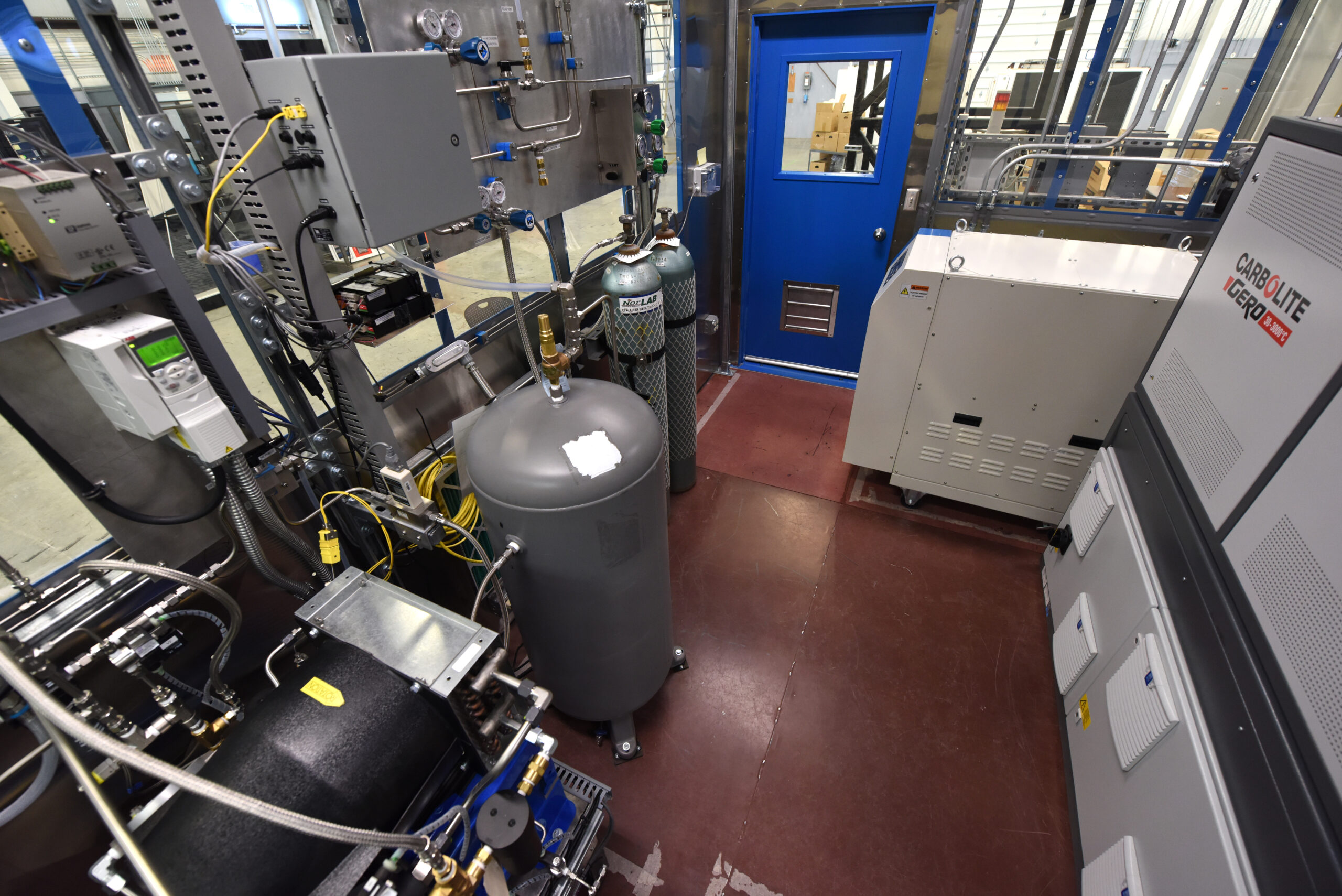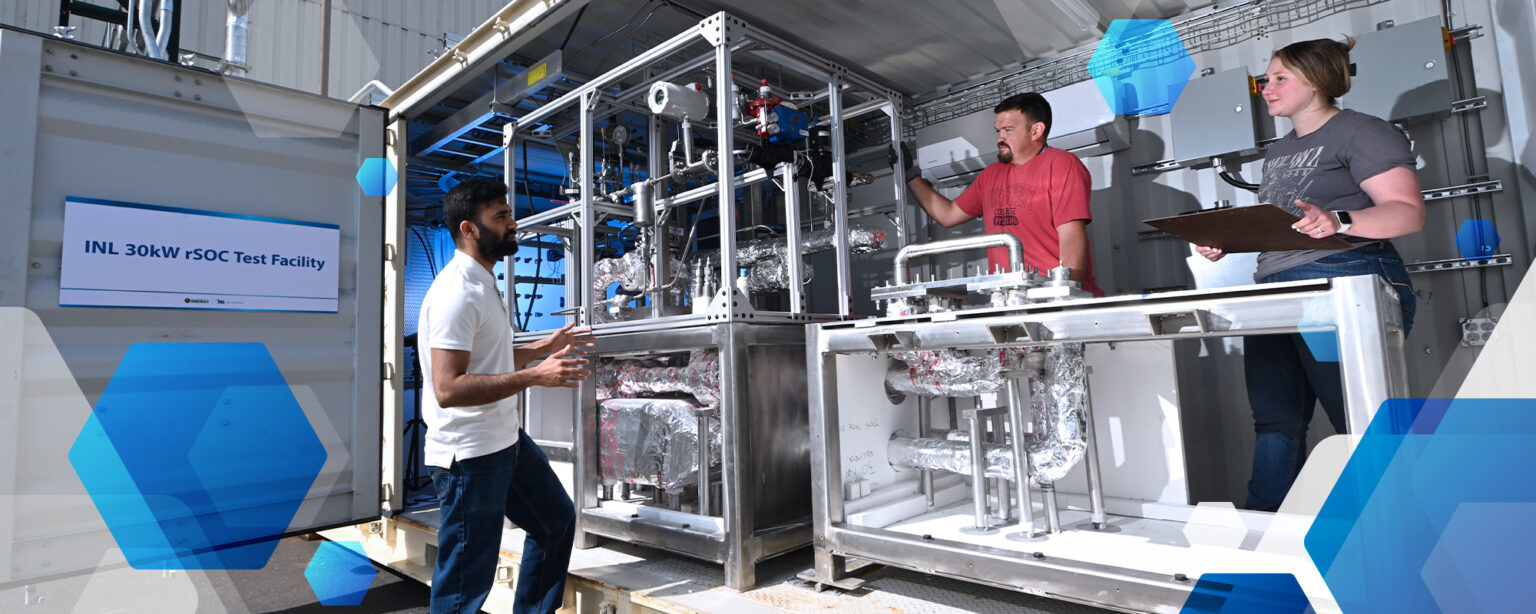As the United States works to achieve net-zero carbon emissions by 2050, different energy sectors will require different solutions.
Renewables and nuclear energy will help decarbonize electricity production, and the light-duty transportation sector will reduce emissions primarily by switching to electric vehicles. Natural gas will continue to displace coal-fired power plants as carbon capture and sequestration also advances.
But other energy sectors are more difficult to decarbonize. Many industries require more than just electricity to run their processes. Some, such as steel and cement production, also need heat, while the ammonia used to make fertilizer requires hydrogen. And today’s batteries charge too slowly and are too heavy to efficiently power semitractor-trailer trucks and other heavy machines.
To solve these challenges, experts envision an economy where carbon-free hydrogen serves as a transportation fuel, a chemical precursor, an energy storage medium and a source of high temperature heat for industry.
Now, Idaho National Laboratory is poised to play a key role in forming a hydrogen economy. On Oct. 13, the Midwest Alliance for Clean Hydrogen, LLC (MachH2) announced that it was selected by the U.S. Department of Energy’s (DOE) Office of Clean Energy Demonstrations to develop a Regional Clean Hydrogen Hub. The MachH2 hub is one of seven hydrogen hubs planned by DOE.
The hub will establish a supply chain for producing, storing, distributing and using hydrogen. The hub is expected to create thousands of jobs during construction and operation.
INL researchers will lead efforts to identify potential end users, perform technoeconomic analyses, and develop and commercialize next generation hydrogen and advanced nuclear technologies for the hub.

The supply chain starts with hydrogen produced and used across three states: Illinois, Indiana and Michigan. MachH2 will use electrolysis technology and three main energy sources — nuclear energy, renewable energy and natural gas with carbon sequestration.
Hydrogen can go to storage facilities or be delivered to end users that could include hydrogen-powered buses, freight trucks, and glass, chemical, fertilizer and steel manufacturing, and eventually, sustainable aviation fuel production.
“One of the reasons we went to Michigan, Indiana and Illinois is that they are central to the nation’s freight sector,” said Seth Snyder, an INL researcher and chief commercialization officer for the hub. “We’re creating a hydrogen corridor, an ecosystem around hydrogen.”
Design and buildout of the hydrogen hub is expected to start immediately, followed by construction within a year and operation of the hub within five years. Project managers estimate the seven hydrogen hubs will collectively cut 25 million metric tons of carbon dioxide emissions each year — roughly equivalent to the emissions from 5.5 million gasoline-powered cars — and create tens of thousands of jobs.
The hydrogen economy is within reach
Recent advances in carbon-free hydrogen production technologies — specifically low- and high-temperature electrolysis — have brought the idea of a hydrogen economy within reach. Much of this progress is due to investments from DOE’s Hydrogen and Fuel Cell Technologies Office.
For now, nuclear and renewable hydrogen production will rely mainly on low-temperature electrolysis, a commercially available technology that uses electricity to split water into hydrogen and oxygen.
Federal funding for the hub is up to $1 billion, which will allow the team to evaluate how deployment and use of up-and-coming technologies such as high-temperature electrolysis — which splits high-temperature steam instead of water — and advanced nuclear reactors could improve energy efficiency and reduce carbon dioxide emissions.
“INL will continue to look at advanced nuclear applications and high-temperature electrolysis, which is more efficient, to accelerate it toward commercialization,” Snyder said.
INL is the premier laboratory in the nation for demonstrating high temperature electrolysis. Researchers at the laboratory helped lay the groundwork for the MachH2 hub to use the technology by helping industry develop solid oxide electrolysis cells and by setting up hydrogen production test platforms for companies to demonstrate their technologies.

The efficiency of high-temperature electrolysis is 20% to 25% higher than low temperature electrolysis. Plus, the process is carbon-free if you use the high-temperature heat and electricity supplied by a clean energy source like nuclear during times of low grid demand.
To help mature these technologies for the MachH2 hub, INL has proposed a 4- to 10-megawatt (MW) hydrogen proving ground at its desert site.
“We want to get high-temperature electrolysis up to speed,” Snyder said. “Now we’re demonstrating 1 megawatt systems, and we need to get it to 10 megawatt and beyond.”
INL has also partnered with industry for low- and high-temperature hydrogen production demonstrations at three commercial nuclear power plants in the United States. Some of these systems began operation in 2023.
These demonstration projects have helped prove technologies and reduce the technical, economic and safety risk of coupling nuclear reactors with hydrogen plants.
Technoeconomic and life cycle analysis
In the near term, INL, along with Argonne National Laboratory, Northwestern University and the University of Michigan, will support MachH2 by providing the technoeconomic and life cycle analyses of the hydrogen hub.
INL’s technoeconomic analyses will include modeling the construction and operation of the various components of the hub and determining how the economics of those components fit within the marketplace. The life cycle analysis — performed by Argonne — will eventually determine the carbon dioxide emissions reductions, using operational data to confirm the calculations and predictions.

“We are going to be spending time and resources to basically determine how the infrastructure should be operated and look for ways to incorporate technologies that INL is researching,” said Dan Wendt, an INL researcher who leads the technoeconomic analysis team. “That includes how the hub could use advanced nuclear and high-temperature electrolysis to further improve impacts and economics.”
Certain aspects of the technoeconomic analysis will be investigated using HERON, a modeling tool set that determines optimal integrated energy system configurations and operating strategies to maximize economics. It’s a complicated question. Researchers will need to build a model capable of balancing the demands of the grid with the needs of hydrogen consumers while considering the overall economics for the entire system.
“We want to know how these systems are going to work together to achieve the greatest impact while still being economically competitive,” Wendt said.
The chicken or the egg?
In the end, the hydrogen hub is a complex mixture of several different hydrogen sources and many different projects including transportation networks, storage facilities and a multitude of end users.
By integrating these components into a single system, MachH2 “helps address the chicken and egg question,” Wendt said. “What comes first, the markets or the production capability? It gives you a foothold for helping the hydrogen economy take off.”
“Our team can play a major role in helping inform how the MachH2 hub components can work together to ensure reliability, competitiveness and large impacts in CO2 reductions,” he said.
The MachH2 hub represents “a transformative opportunity for the lab,” Snyder said.
Richard Boardman, INL lead for Nuclear-Hydrogen Systems Integration, agreed.
“As the lead lab for nuclear energy applications, INL will use its computational and testing capabilities to ensure the commercial success of hydrogen production and use by industry,” he said. “The express purpose of INL’s capabilities is to validate electrolysis stacks and integrated electrolysis modules that are capable of flexible operations.”
To learn more about INL’s research on hydrogen, visit https://inl.gov/integrated-energy/hydrogen/.







